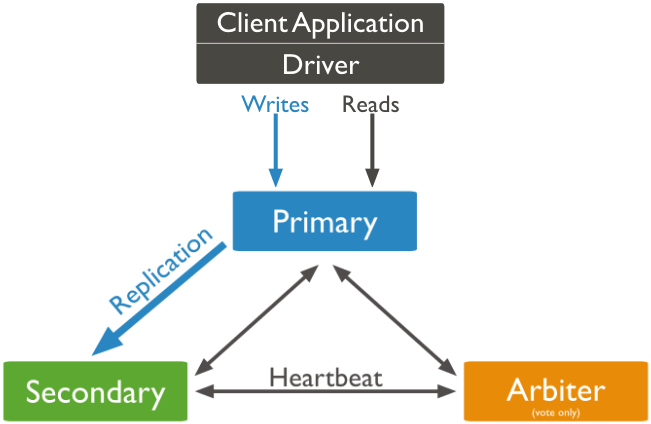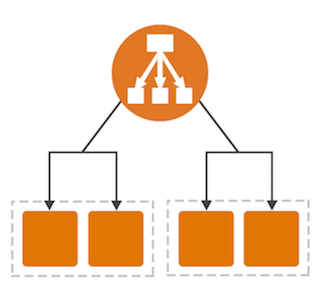Clustering and Load Balancing RESTHeart
What are Clustering and Load Balancing
Server Clustering is a method of turning multiple computer servers into a cluster, which is a group of servers that acts like a single system.
Load Balancing is about the distribution of workloads across multiple computing resources, such as computers, server clusters, network links, etc. Load balancing aims to optimize resource usage, maximize throughput, minimize response time, and avoid overload of any single resource.
A MongoDB Replica Set is a group of mongod processes that maintain the same data set. Replica sets provide redundancy and high availability, and are the basis for all production deployments.
High availability (HA) is a general characteristic of a system, which aims to ensure an agreed level of operational performance, usually uptime, for a higher-than-normal period.

RESTHeart has always been a very good fit for Microservices and other styles of distributed architecture. It has been deployed successfully with clustering technologies such as AWS ECS and Fargate, Kubernetes and many others.
How it works
RESTHeart receives HTTP requests and routes them to the Service bound to the request paths. Creating a cluster requires an HTTP load balancer on top of the chosen clustering technology.
RESTHeart is stateless for all features but for the default Token Manager used for token authentication. This implementation that comes with RESTHeart holds the tokens in memory. As a result, it does not support clustering.
Thus a cluster of RESTHeart nodes requires sticky sessions when using token authentication otherwise the RESTHeart node could receive an authentication token created by another instance, which results in an HTTP 401 “Unauthorized” error.
As RESTHeart instances don’t communicate directly (to avoid expensive synchronization steps), then they can’t validate authentication tokens created by other instances in the same cluster. To overcome this situation, the HTTP Load Balancer must insert a sticky session token into a cookie and then handle the communication flow from clients to RESTHeart instances accordingly. Sticky sessions, from an architectural point of view, introduce a level of statefulness in the system and their expiration timeout must be carefully tuned.
JWT Token Manager
The specialized JWT Token Manager which creates cryptographically signed tokens that can be acknowledged by any RESTHeart node in the cluster without direct communication and synchronization among them: fast, simple and safe.
For more information refer to the JWT Token Manager documentation page.

In summary, the top-level steps for a highly available RESTHeart + MongoDB configuration are:
-
Create a MongoDB Replica Set;
-
Create a RESTHeart cluster connected to the MongoDB Replica Set;
-
Put an HTTP Load Balancer on top of it.
If you want to know more about clustering, load balancing and high availability, please contact us.
References
To understand more in general about Load Balancing, Affinity, Persistence, and Sticky Sessions you can read this overview.